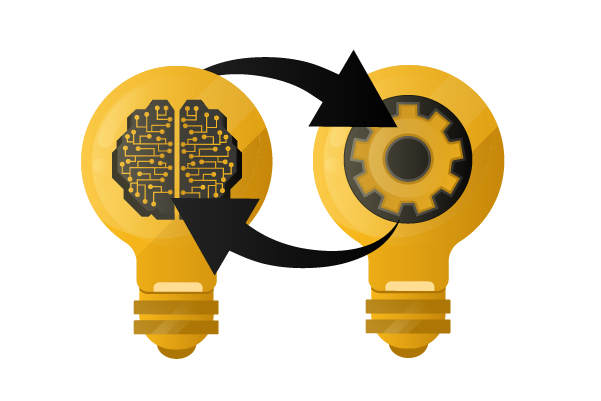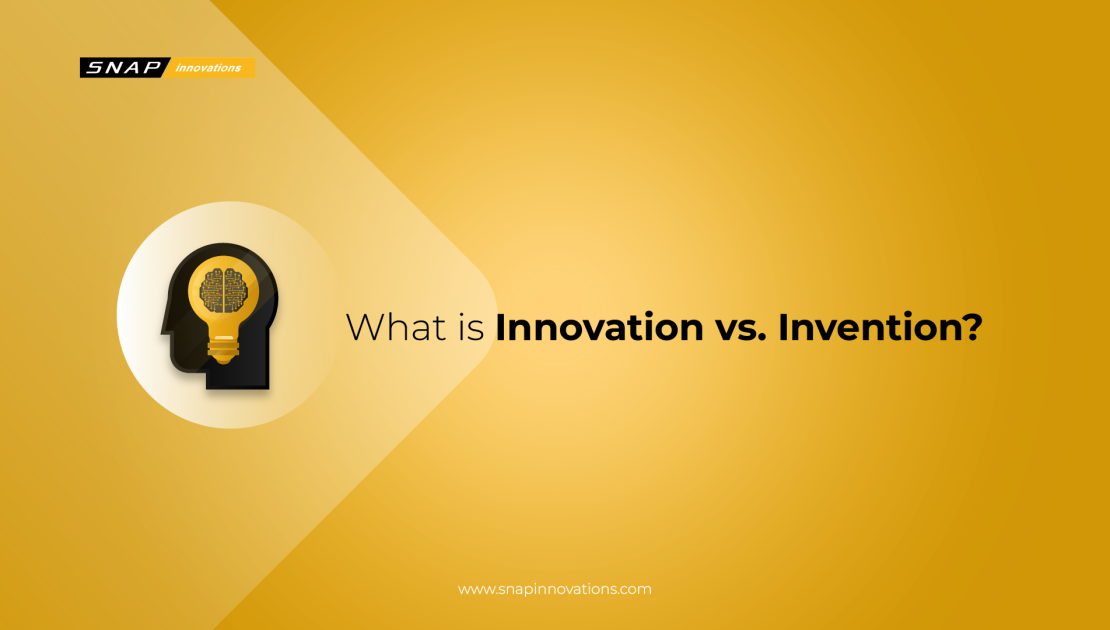Navigating the uncharted waters of human creativity, we are constantly accompanied by the steadfast companions of innovation and invention. These quintessential forces emerge as the architects of transformation, laying the foundations upon which societies elevate, technologies evolve, and visions of a more progressive world materialize. Their powerful synergy defines the contours of our creative landscapes, ushering an era of endless possibilities, continuous evolution, and a tapestry woven with the threads of novelty and enhanced utility.
Venturing deeper into the heart of these concepts, we encounter the essence of invention as a crucible of creativity. Here, the seeds of novel ideas are planted, cultivating grounds ripe with the fruits of unprecedented solutions, methodologies, and technological breakthroughs. It is within this realm that the symphony of originality resonates, echoing the melodies of new beginnings and the birth of ideas that redefine the paradigms of existing knowledge and functionalities.
On the parallel paths of this journey, innovation emerges as the guardian of relevance and sustainability. It amplifies the echoes of invention, harmonizing them with the rhythms of societal needs, practical applicability, and enhanced value. Through the lenses of innovation, the inventive ideas are meticulously refined, adapted, and aligned with the prevailing markets and societal landscapes, ensuring their longevity, adaptability, and continual resonance with the evolving tides of technological and societal progress.
In the interplay of these dynamic forces, we uncover a tapestry enriched with the vibrant threads of creativity, each woven with precision to reflect the transformative powers of innovation and invention. This exploration not only demystifies the realms of these concepts but also unveils the strategic pathways through which they manifest their influential impacts, guiding visions, ideas, and societies towards horizons marked by progress, solution-oriented advancements, and a future burgeoning with transformative possibilities and achievements.
What is Innovation?
 Innovation is a brilliant artist, delicately painting the canvas of reality with strokes of ingenuity, practicality, and foresight. It crafts a vibrant mosaic of solutions, processes, and improvements that not only stand as testimonies of human ingenuity but also as pragmatic assets that elevate societal capabilities, efficiencies, and overall quality of life. In the vast theater of human endeavor, innovation acts as a versatile performer, playing diverse roles from a problem solver and value creator to a trendsetter and change agent, enriching the domains of technology, business, and society with its transformative impacts.
Innovation is a brilliant artist, delicately painting the canvas of reality with strokes of ingenuity, practicality, and foresight. It crafts a vibrant mosaic of solutions, processes, and improvements that not only stand as testimonies of human ingenuity but also as pragmatic assets that elevate societal capabilities, efficiencies, and overall quality of life. In the vast theater of human endeavor, innovation acts as a versatile performer, playing diverse roles from a problem solver and value creator to a trendsetter and change agent, enriching the domains of technology, business, and society with its transformative impacts.
Encapsulating a holistic approach to progress, innovation embodies a multifaceted philosophy. It is not confined within the walls of technological advancements or product enhancements; instead, it sprawls across various dimensions including organizational practices, business models, and customer experiences. It’s like a river, continuously flowing, adapting, and carving new paths, ensuring that ideas and solutions remain aligned with the evolving landscapes of market needs, consumer expectations, and global trends. Innovation, therefore, stands as a beacon of adaptability and resilience, illuminating pathways to sustained relevance and success in a dynamically changing environment.
Also Read: What is SaaS Trading Solutions? The Future of Trading
Moreover, innovation embodies a spirit of communal progress and inclusivity. It seeks to harness collective intelligence, collaborative efforts, and a diversity of perspectives to fuel the engines of improvement and invention. It fosters ecosystems where ideas are freely exchanged, cultivated, and synergized, building bridges between isolated islands of creativity and expertise. Through this, innovation nurtures a thriving habitat where solutions and strategies are continuously enriched by a diversity of insights, experiences, and visions, enabling societies and industries to flourish in a garden of shared progress and mutual enrichment.
What is Invention?
 Invention embodies the essence of human ingenuity, serving as the wellspring from which the rivers of innovation flow. It is a manifestation of the human mind’s capability to transcend conventional boundaries, synthesizing knowledge, creativity, and imagination to craft novelties that shape the contours of reality and human experience. Inventions serve as luminaries, casting rays of unprecedented solutions, technologies, and methodologies that illuminate the paths of progress and societal evolution.
Invention embodies the essence of human ingenuity, serving as the wellspring from which the rivers of innovation flow. It is a manifestation of the human mind’s capability to transcend conventional boundaries, synthesizing knowledge, creativity, and imagination to craft novelties that shape the contours of reality and human experience. Inventions serve as luminaries, casting rays of unprecedented solutions, technologies, and methodologies that illuminate the paths of progress and societal evolution.
An invention is akin to a transformative journey where the adventurers— inventors— traverse the landscapes of the unknown, navigating the terrains of challenges, uncertainties, and discoveries. This journey is punctuated with moments of revelation, insight, and the unveiling of treasures hidden in the recesses of curiosity and creativity. The inventors, in their relentless pursuit of novelty, wield the torches of perseverance, resilience, and a relentless spirit of inquiry, uncovering realms of possibilities and birthing ideas that echo through the corridors of time as monuments of human achievement and ingenuity.
Each invention carries within its essence a heartbeat of originality, a rhythm of uniqueness that resonates with the melodies of progress, disruption, and transformative impact. It is a tapestry woven with threads of exploration, risk-taking, and the profound joy of creating something that stands as a testament to human capability and the endless horizons of our creative spirits. Thus, invention is not merely a process but a celebration of human potential, a festival of creativity where each invention marks a momentous milestone in the chronicles of human triumph, exploration, and advancement.
The Interplay of Innovation and Invention
 Innovation and invention, though distinct in their essence, harmonize in a beautiful symphony of progress, each playing a unique yet complementary role in the grand orchestra of human advancement. Innovation is like the skilled musician who masterfully plays the instrument crafted by the invention. It ensures that the melodies of new ideas, products, and processes resonate with the rhythms of practicality, market demands, and continuous improvement.
Innovation and invention, though distinct in their essence, harmonize in a beautiful symphony of progress, each playing a unique yet complementary role in the grand orchestra of human advancement. Innovation is like the skilled musician who masterfully plays the instrument crafted by the invention. It ensures that the melodies of new ideas, products, and processes resonate with the rhythms of practicality, market demands, and continuous improvement.
Their interplay is a dynamic dance where invention leads with bold steps of originality and creativity, and innovation follows with graceful moves of enhancement, adaptation, and value creation. This harmonious partnership orchestrates the ballet of progress, ensuring that the stage of human achievement is graced with performances that captivate, inspire, and meet the evolving desires and needs of society.
The Impact on Society and Economy
Innovation and invention jointly wield the power to propel societies and economies into flourishing realms of prosperity, relevance, and sustainability. Inventions ignite the engines of possibility, opening new highways of technology, knowledge, and opportunity. They are the creative sparks that illuminate the darkness of the unknown, revealing new landscapes of potential and progress.
1. The Catalyst of Possibility: Inventions
Inventions are the bedrock upon which progress is founded. When an individual or group introduces a novel concept or device, it acts as a catalyst, setting off chain reactions of potential outcomes. Think of historical inventions such as the steam engine, the light bulb, or more recent ones like the internet and the smartphone. These weren’t just products or ideas; they were gateways. They opened avenues that were previously unseen or unthought of.
The true value of an invention doesn’t lie merely in its novelty, but in its ability to redefine boundaries and reshape understanding. Every significant invention brings with it a paradigm shift, altering not just how tasks are done, but often reshaping societies’ very fabric. For instance, the invention of the printing press didn’t just make book production easier; it democratized knowledge, leading to the enlightenment era and eventually to revolutions and societal shifts.
2. The Bridge to Practicality: Innovation
While inventions lay down the foundation, it’s innovations that bring these ideas to the masses in practical, usable forms. Innovation can be seen as the process of refining, adapting, and introducing an invention to wider audiences, ensuring it’s not just a concept but a tangible tool that adds value. The raw idea or product is taken, its shortcomings identified, improvements made, and then re-introduced in a manner that is more aligned with market needs and desires.
Innovation is vital because, without it, many great inventions might never see the light of day or remain trapped within the confines of theoretical brilliance. Consider the transition from massive, room-sized computers to personal desktops and then to sleek smartphones. The original invention was groundbreaking, but it was the continuous innovations that made it accessible and ubiquitous.
Innovations ensure that the seeds of invention grow, take root in society, and blossom, touching every aspect of human life. They represent the bridge between what’s possible and what’s practical, ensuring that inventions aren’t just flashes of brilliance but sustained sources of societal and economic enhancement.
Tailoring Strategies for Success
For businesses and individuals seeking to flourish in the realms of creativity, technology, and market success, understanding, and strategically leveraging the powers of innovation and invention are essential. Innovators and inventors must don the robes of visionaries, capable of peering beyond the horizons of the present, envisioning the landscapes of possibility, and crafting paths that lead to realms of achievement and success.
1. Invention Strategies: Exploration and Curiosity
Invention, at its core, embodies the essence of exploration and curiosity. Innovators aiming to be successful inventors must foster a spirit of adventurous inquiry, constantly seeking new knowledge, insights, and understanding beyond established boundaries. This requires a resilient mindset that is open to questioning, learning, and adapting. The process of invention necessitates venturing into uncharted territories, embracing uncertainties, and discovering paths previously untraveled.
The strategies deployed in invention must be infused with a readiness to encounter and engage with the unknown, fostering a continuous process of learning and unlearning. Innovators should maintain a ceaseless curiosity, always looking to uncover the hidden layers and dimensions of concepts, technologies, and processes. This approach will enable the unlocking of new realms of possibilities and the birthing of ideas and solutions that are both transformative and novel.
2. Invention Strategies: Boldness and Vision
A successful invention strategy is also marked by boldness and a clear, forward-thinking vision. Innovators and inventors must wear the robes of visionaries who can look beyond the immediate and envisage future landscapes filled with endless possibilities. They should have the courage to take risks, challenge the status quo, and push boundaries to turn their visionary ideas into reality.
In implementing invention strategies, it’s essential to maintain a strong sense of conviction and belief in one’s ideas, despite potential challenges and opposition. Having a bold vision serves as a guiding light, providing direction and purpose, and helping to navigate through the complexities and uncertainties that characterize the invention process.
3. Innovation Strategies: Adaptability and Continuous Improvement
Adaptability is a cornerstone in the realm of innovation strategies. It involves a readiness to evolve, modify, and enhance ideas, products, or processes in response to changing market trends, needs, and opportunities. An adaptive strategy requires a sensitivity to the external environment, allowing for the realignment of objectives and approaches based on emerging demands and trends.
The concept of continuous improvement is intertwined with adaptability. Innovators should be committed to a process of ongoing enhancement and refinement, ensuring that their offerings remain relevant, competitive, and aligned with changing market dynamics. This involves a commitment to learning, feedback integration, and the iterative improvement of products, services, or processes.
4. Innovation Strategies: Sensitivity to Market Trends
An effective innovation strategy is also characterized by a keen sensitivity to market trends, needs, and opportunities. Innovators should be astute observers of the market, always on the lookout for emerging trends, shifts, and evolving customer needs. This allows for the identification of gaps, opportunities, and areas where value can be added or problems can be solved.
Being sensitive to market trends facilitates strategic positioning and decision-making. It enables innovators to align their offerings with market demands, optimize relevance, and enhance the likelihood of success. Understanding and responding to market dynamics are critical for ensuring that innovation efforts are directed towards areas with the most significant potential for impact and success.
Read More: Trading Technology: Revolutionizing Financial Markets
Conclusion
Innovation and invention serve as powerful engines driving the train of human progress and societal advancement. They act as catalysts, sparking transformations that echo across various sectors, industries, and aspects of life, enriching societies with a bouquet of enhanced capabilities, solutions, and experiences. Mastering the art and science of these twin pillars is not merely an exercise in creativity and intellectual enrichment but a potent tool for unleashing waves of value, relevance, and enduring impact across the global landscape.
The conclusion of our journey lies in the harmonious integration of the elements of innovation and invention. By intertwining the spirits of exploration, curiosity, adaptability, and a meticulous sensitivity to market trends and needs, we unlock a symphony of opportunities and potentials.
This orchestra plays the melodies of success, value creation, and a resonant impact that reverberates through the corridors of time, leaving indelible prints of achievement and progress on the tapestry of human history. Thus, armed with tailored strategies imbued with these qualities, innovators and inventors stand as architects of a future flourishing in the gardens of continuous improvement, relevance, and holistic success.

